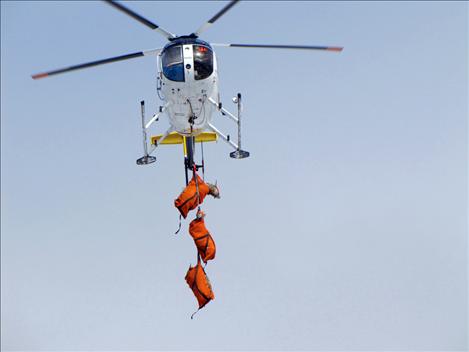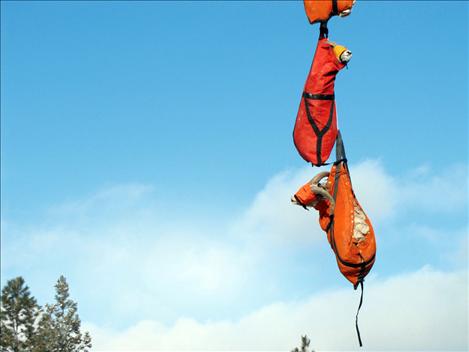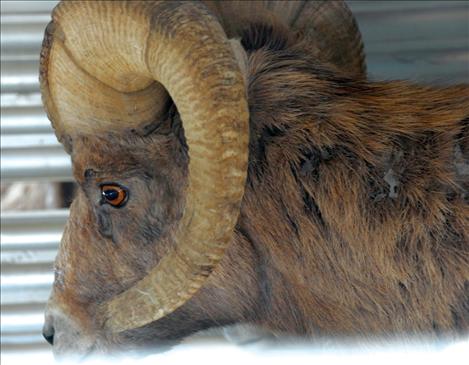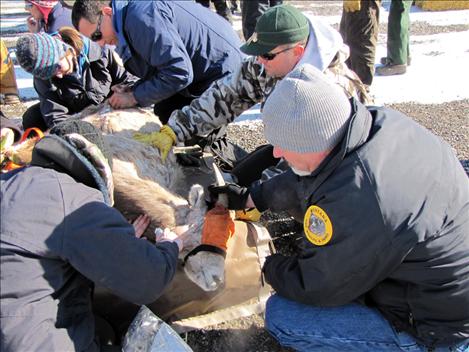Bighorn sheep head to new home
Hey savvy news reader! Thanks for choosing local.
You are now reading
1 of 3 free articles.
BIG ARM — Wildhorse Island is an incubator for bighorn sheep, and for the past four out of five years, Montana Fish Wildlife and Parks have removed excess bighorn sheep to other areas in the state.
Bruce Sterling, Montana wildlife biologist from Thompson Falls, said during an aerial wildlife survey last week, Fish Wildlife and Parks staff counted 155 Bighorn Sheep on the 2,160-acre island. While they can’t count every sheep, that’s a good number, and maybe more than the island can support.
Dave Landstrom, FWP State Park Manager, said an optimum number of sheep on the island would be 100 to 125.
Bighorn sheep, whitetail deer and six wild horses share the feed on Wildhorse Island. Coyotes are the only bighorn sheep predators on Wildhorse Island, although Sterling said occasionally there’s a black bear and years ago a mountain lion.
FWP hired Quicksilver Air, pilot Rick Swisher and his capture crew from Colorado. The animals are “shot” with a net gun that drops a square bighorn sheep-sized net over an animal, Landstrom said.
Crew members called “muggers” blindfold and hogtie the sheep. Big rams can weigh up to 300 pounds, but ewes only reach about 150 pounds. Lambs are considerably smaller.
When the sheep is blindfolded, it calms and quits struggling. Then the sheep is bagged up, kept blindfolded and transported by helicopter, suspended vertically with three or four other sheep like a string of orange Christmas tree lights, to a staging area in Big Arm State Park.
There the sheep rests on tarp-covered bales of straw where volunteers take oral and nasal swabs, blood to check for pneumonia complex and lungworms, fecal samples and observe overall body condition. Then they’re transferred into a stock trailer for transport. The sides of the trailers are covered with sheets of plywood so the animals don’t try to escape.
The crew captured and processed 50 sheep on Feb. 26 and finished up with 11 sheep the next day.
“(Catching) 61 sheep in a day and a half is pretty dang good,” Sterling said.
The bighorn sheep — 21 ewes, one lamb and 39 rams — will be shared about 50/50 between Kootenai Falls Wildlife Management area near Libby and the Berray Mountain Wildlife Management area northwest of Noxon.
The trailered sheep were on the road to the Noxon area about noon on Feb. 27 to beat the snowstorm moving into the region.




















